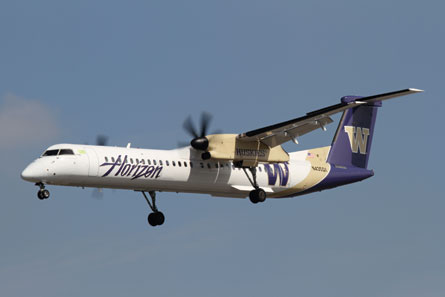The US Regional Airline Association claims proudly that its pilots "have to pass a rigorous evaluation process before they are hired". But on 12 February 2009 at Buffalo, New York, a US regional airline suffered a disastrous fatal accident that led everyone in the industry, including the Federal Aviation Administration, to question whether the pilots in charge of the aircraft were properly qualified - although they certainly had licences.
In June 2009, some three months after the Buffalo crash, the RAA adopted a strategic safety initiative that was clearly aimed at addressing the shortcomings the accident revealed. Many of these shortcomings are not addressed by the FAA regulatory system, specifically its minimum requirements for recurrent training. Many airlines train to legal minimums, with compliance rather than performance as the goal. So the RAA's safety initiative was not going to be able change the sector's safety performance overnight.
The airline that suffered the accident, to a Bombardier Dash 8 Q400, was Memphis-based Colgan Air, a Pinnacle Airlines carrier that operates Continental Connection, United Express and US Airways Express flights.
In 2007 a National Transportation Safety Board inquiry into an October 2004 Pinnacle Bombardier CRJ200 fatal crash made 11 recommendations, most related to crew training and discipline. There was a specific recommendation that carriers "improve flightcrew familiarity with and response to stick pusher systems and, if warranted, establish training requirements for stick pusher-equipped airplanes". If Pinnacle and its group carriers did anything about that recommendation, the measures did not work, because an inappropriate pilot response to stall warning was one of the primary causes of the Buffalo crash, according to the NTSB final accident report. So was crew indiscipline, shown in disregard for sterile cockpit procedures during the approach.
 |
|---|
©Airteam ImagesThe FAA has set out to resolve flightcrew fatigue issues |
Since then, although neither Pinnacle nor Colgan are members of the International Air Transport Association, Colgan has submitted to independent scrutiny by undergoing - and passing - an IATA Operational Safety Audit.
The RAA's senior vice-president of operations and safety, Scott Foose, says that an aviation advisory committee has been investigating the reason that training for stall avoidance and recovery did not appear to translate into performance on the line, and the FAA has been examining possible training improvements. Foose says the FAA is expected to provide new training guidelines soon.
The RAA has urged changes to the regulatory pilot training regime to make it more "mission-based", and it aligns itself with FAA administrator Randy Babbitt in pleading for the system to avoid setting log-book flight hour minimums for regional airline pilots, but to concentrate on training quality and performance.
Like Babbitt, it argues that at the low-hours end of the market, the quality of training and a high level of aviation-specific academic knowledge is more important than the number of hours in the air. The RAA would like to see that mandated to create a level playing field, saying: "The idea has merit. Many of our members have bridge programmes with aviation universities so that their knowledge training is closely aligned with the training programmes provided by the air carrier."
 |
|---|
©FlightGlobalThe FAA raised issues after the 2009 crash of a Colgan/Continental Connection Q400 |
KNOWLEDGE TRAINING
The association would like to see superior knowledge training count against any requirement for statutory minimum flight time, but argues against rules that would make training at a Part 141 flight training organisation the only way into the industry, on the grounds that would increase exclusivity, reduce competition, put up hiring costs and eliminate trainees who arrived by alternative routes.
Almost above all, the RAA wants access to records of FAA check results and enforcements for individual pilots considered for hire, but it also wants the FAA to make more use of its own database in identifying training problems and devising mitigations.
Meanwhile the RAA has been challenging almost all parts of the FAA advance notice of proposed rulemaking on flight duty time that would have any effect on its members. The FAA's NPRM sets out to correct one of the systemic problems that was judged a contributory cause of the Buffalo crash: flightcrew fatigue.
This RAA challenge came despite its commitment in its safety initiative to act on fatigue and its causes. And even if it is forced to accept changes eventually, in comments submitted in November last year the RAA says: "While the FAA's Response to Clarifying Questions document indicates that the FAA anticipates a final rule would become effective two years after publication, it is not at all clear to the RAA member airlines, given the magnitude of the changes being proposed, that the complex process development, training, and system programming, testing and implementation that would be required to effect those changes can be properly accomplished in such a time period."
The RAA has commissioned a fatigue study by Washington State University's Sleep and Performance Research Center to look at the impact of fatigue and other human factors on pilot performance in multi-sector operations.
Behind all this agonising, the fear of losing pilot experience to the majors remains a permanent concern to the regionals, as does the need to keep a right rein on the cost base.
Looking forward to 2011, Air Wisconsin president Jim Rankin said that the biggest challenges to the sector this year would be "organic growth opportunities in a mature domestic industry, managing attrition if mainline hiring accelerates, and controlling costs".
Read David Learmount's blog on airline safety issues at flightglobal.com/learmount
Source: Flight International























